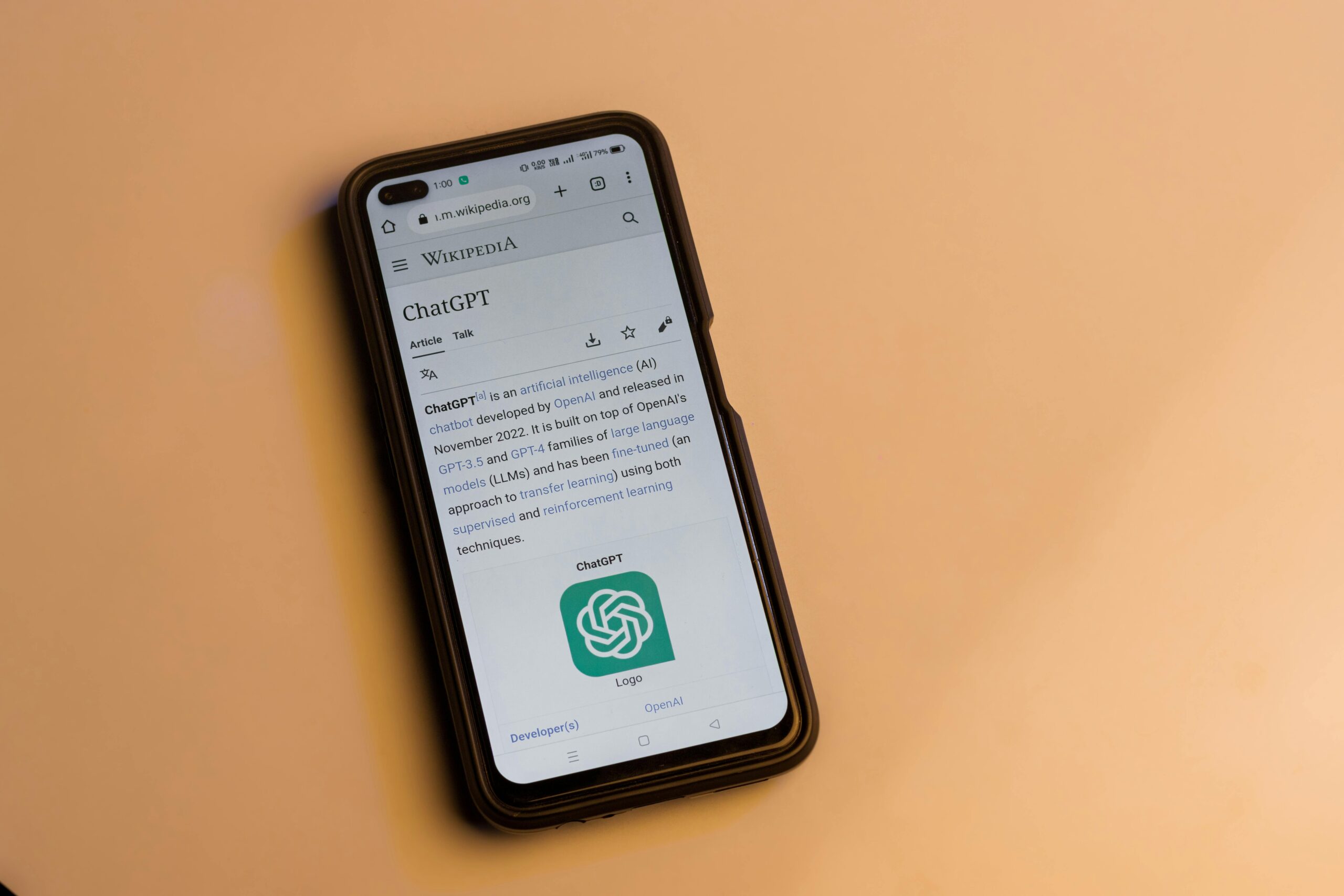ChatGPT is revolutionizing the way apps are built, offering a powerful tool for developers to streamline the process, enhance user experiences, and reduce costs. Whether you’re a beginner or an experienced developer, ChatGPT can assist you at every stage of app creation, from planning to deployment. In this guide, we’ll explore how to leverage ChatGPT’s capabilities to build apps efficiently and effectively.

Why Use ChatGPT for App Development?
Before diving into the step-by-step process of building an app with ChatGPT, it’s essential to understand why this tool is worth incorporating into your development workflow. ChatGPT offers numerous benefits for developers looking to streamline their work:
- Time efficiency: ChatGPT can generate code snippets and offer solutions almost instantly, saving developers countless hours of coding from scratch.
- Cost savings: by automating tasks such as coding, debugging, and generating content, ChatGPT can reduce the need for additional developers or resources, leading to significant cost savings.
- Enhanced user experience: ChatGPT’s natural language processing (NLP) capabilities enable the creation of intuitive, user-friendly interfaces, making it easier to build interactive features like chatbots and personalized recommendations.
- Error reduction: ChatGPT can assist in debugging and troubleshooting, helping to identify and fix code errors faster, ultimately leading to fewer bugs in the final product.
Integrating ChatGPT into your app development process offers significant advantages, including time efficiency, cost savings, and enhanced user experience. ChatGPT allows developers to focus more on refining app features and delivering value to users.
5 Applications Leveraging AI for Enhanced User Experiences to Inspire
As the use of ChatGPT in app development continues to grow, various applications have integrated this advanced AI to improve user interactions, automate processes, and enhance functionality. Below are five apps that showcase how AI can be utilized to build more engaging, efficient, and responsive applications.
1. Slite
Slite is a knowledge management and collaboration platform that uses AI to help teams work smarter. It enhances document creation with AI-powered drafting, summarization, and search capabilities to let users generate meeting summaries, draft notes quickly, and ask questions using natural language to retrieve information across documents.
2. Poe
Poe is an AI chat platform that aggregates multiple AI models into one interface. Users can interact with various models to handle a range of business tasks – from brainstorming ideas and drafting emails to answering technical questions.
3. Rows AI
Rows AI brings spreadsheet functionality to the next level with built-in AI support. Users can analyze data, generate summaries, and even interact with datasets using natural language instead of complex formulas. Rows makes it possible to ask intelligent questions about your data and receive clean, readable outputs, empowering non-technical users to explore insights and automate reporting workflows.
4. Copy.ai
Copy.ai leverages AI to generate high-quality marketing content. Users can describe their product or topic, and the app produces multiple versions of blog posts, product descriptions, social media content, and more.
5. Cursor AI
Cursor AI is an AI-enhanced coding assistant that provides real-time code suggestions, explanations, and bug fixes based on the context of what a developer is working on. AI helps convert natural language prompts into working code, making Cursor AI especially useful for software developers looking to improve productivity, reduce errors, and accelerate development cycles.
These applications show how AI is being embedded into diverse tools to improve productivity, streamline workflows, and enhance the user experience across writing, coding, data analysis, and collaboration.

How to Build an App Using ChatGPT: A Detailed Overview
To create a successful and reliable app using ChatGPT, you need to follow the instructions. Here are the basic steps you should take.
Step 1: Define Your App’s Purpose and Features
The first step in building any app is defining its purpose. What problem does it solve? Who is the target audience? These questions are essential for shaping your app’s overall structure and functionality. When using ChatGPT, it’s important to clearly communicate your app’s purpose to ensure that the AI can generate relevant code and provide useful suggestions.
Here are some key points to consider:
- מַטָרָה: decide on the app’s core function. Is it a social media platform, a productivity tool, or a fitness tracker?
- תכונות: list the features your app should have. If you’re building a customer support app, include features like live chat, ticket management, and a knowledge base.
- User flow: determine how users will interact with your app. This includes understanding the navigation, content layout, and the overall user journey.
Once these elements are clearly defined, you can use ChatGPT to help you create a detailed plan for your app, from coding the user interface (UI) to implementing backend features.
Step 2: Choose Your Development Approach and Tools
The next step is to decide how you will integrate ChatGPT into your app development process. ChatGPT can assist in two primary ways:
- Direct integration into your app. You can directly integrate ChatGPT into your app’s backend, allowing the AI to perform real-time tasks such as answering user queries or providing personalized content. This is ideal for apps that require ongoing interaction with users, such as customer support or virtual assistant apps.
- Using OpenAI’s hosted API. If you prefer not to handle the infrastructure and updates yourself, using OpenAI’s hosted API is a great option. This approach allows your app to send text inputs to OpenAI’s servers, where ChatGPT processes the information and sends back a response. This is a more scalable option and can be easier to manage for larger apps.
Both approaches have their pros and cons, and the choice will depend on your app’s specific needs and your team’s expertise.
Step 3: Set Up Your Development Environment
Once you’ve decided on your approach, it’s time to set up your development environment. This will vary depending on the platform you’re developing for (iOS, Android, or web). For example:
- For Android: install Android Studio and set up an Android project. You will also need to add the necessary dependencies to your app’s file to integrate with OpenAI’s API.
- For iOS: if you’re building an iOS app, set up Xcode and create a new project. You can use Swift or Objective-C to integrate ChatGPT.
- For Web: if you’re developing a web app, choose a framework like React, Angular, or Vue.js to get started. You can use JavaScript to communicate with ChatGPT’s API.
Depending on your chosen development environment, you’ll need to install the appropriate libraries and dependencies. For example, to integrate ChatGPT’s API, you’ll need to install libraries like Retrofit for Android or Alamofire for iOS. These libraries will help you handle HTTP requests to communicate with the API.
To interact with OpenAI’s API, you’ll need an API key. This key is provided when you create an account with OpenAI and request access to their API. Be sure to keep your API key secure, as it is used to authenticate your app with OpenAI’s servers.

Step 4: Develop the App’s Interface
The user interface (UI) plays a crucial role in the success of your app. An intuitive, easy-to-use interface enhances user experience and encourages engagement. With ChatGPT, you can build conversational UIs that allow users to interact naturally with the app.
If you’re building a customer support app, the UI could include:
- Chat interface: a text input box for users to send messages and a display area to show responses from ChatGPT.
- Knowledge base: a section where users can browse frequently asked questions or articles, with the option to ask ChatGPT for additional information.
- Ticket management: a feature for users to submit issues or queries, which ChatGPT can categorize and forward to the appropriate department.
When building the UI, consider using XML (for Android) or SwiftUI (for iOS) to design a layout that fits your app’s branding and purpose. Use components like buttons, text fields, and list views to create a seamless interaction flow.
Step 5: Implement Chat Functionality
The core feature of any app using ChatGPT is the ability to send and receive messages. To implement chat functionality, you need to set up methods for sending user input to the OpenAI API and receiving the response.
Here’s how the process works:
- User input: when a user types a message, the app sends this input to ChatGPT using the API.
- API response: ChatGPT processes the input and generates a response based on its training data.
- Display response: the response is sent back to the app, where it is displayed to the user.
This is a simplified version, but it demonstrates the key concept of sending user input to ChatGPT and handling the response.
Step 6: Test and Optimize the App
Once the app is functional, it’s time to test it thoroughly. Testing ensures that the app works as expected and that users can interact with ChatGPT seamlessly. During testing, pay attention to the following:
- Response accuracy: ensure that ChatGPT provides relevant and helpful responses to user queries.
- ממשק משתמש/UX: test the user interface to make sure it’s easy to navigate and visually appealing.
- Error handling: make sure the app gracefully handles errors, such as network failures or unexpected inputs.
- ביצועים: check the app’s performance to ensure it runs smoothly without lagging or crashing.
You can use tools like Firebase for Android or XCTest for iOS to automate testing and improve the quality of your app.
Step 7: Prepare and Deploy Your App
Once your app has passed all testing phases and is deemed stable, it’s time to deploy it to the relevant app stores. For Android applications, the Google Play Store is the go-to platform for distribution, while for iOS, you’ll use the Apple App Store. However, before submitting your app for review, there are several key steps you must take to ensure a smooth deployment.
Keep in mind the following when preparing for deployment:
- Platform compliance: ensure that your app meets the specific guidelines and requirements set forth by both the Google Play Store and Apple App Store.
- App Store Optimization (ASO): before submission, make sure your app’s title, description, screenshots, and keywords are optimized to improve visibility in the app stores.
- App icons and branding: ensure that your app’s icon, splash screens, and visual assets adhere to the platform’s guidelines.
- Final testing: perform a final round of testing, focusing on the deployment environment.
Deploying the app to the stores:
- For Android: you can upload your APK (Android Application Package) file via the Google Play Console. Fill in the required information, such as app description, privacy policy, and permissions needed by your app. Once submitted, Google will review your app, which can take anywhere from a few hours to a couple of days.
- For iOS: Using Xcode, you can submit your app to the App Store Connect platform. Similar to Google, Apple will review your app, which typically takes a few days. If your app passes the review, it will be live on the App Store, ready for users to download.
Once your app is live on the respective app stores, continue to monitor its performance and user feedback to ensure it operates smoothly and meets user expectations.
Step 8. Maintain Your App to Ensure Long-Term Success
Maintaining your app post-launch is just as important as the development and deployment process. Here are some key actions to keep your app running smoothly:
- Bug fixes and updates: address any unexpected bugs or performance issues that arise after the app’s release.
- Security updates: check for vulnerabilities and apply necessary security patches. Ensure that all communication with the ChatGPT API is encrypted and secure.
- Feature enhancements: incorporate new features and updates from the ChatGPT API to keep your app fresh and aligned with the latest advancements.
- Performance monitoring: track metrics such as load times, response times, and memory usage, especially when processing large queries.
- Scaling the app: upgrade backend services, optimize API calls, or use cloud services like AWS or Google Cloud to ensure your app remains responsive as demand increases.
- User engagement and retention: continue to engage with your users after launch by using push notifications, newsletters, and regular content updates.
By keeping up with these maintenance tasks and continuously refining the app based on user feedback and new technologies, you can ensure that your ChatGPT-powered app remains successful and meets user expectations over time.

A-listware: Your Partner in Building Innovative Apps with ChatGPT
At רשימת מוצרים א', we specialize in crafting cutting-edge software solutions that help businesses achieve their goals. By integrating AI technologies like ChatGPT, we streamline the app development process, making it faster, more efficient, and cost-effective. Whether you’re looking to create a customer support app, a productivity tool, or a mobile app for your business, A-listware brings its expertise to ensure that your app is not only functional but also delivers a top-tier user experience.
We understand the unique needs of different industries, and our team leverages the power of ChatGPT to offer conversational AI integration, improving user engagement and satisfaction. From developing the app’s backend to designing an intuitive user interface, our experts work closely with you to create a seamless, user-friendly experience that aligns with your business objectives. With A-listware’s skilled team and advanced AI tools like ChatGPT, we ensure that your app development process is smoother and more efficient than ever before.
נקודות עיקריות:
- Comprehensive experience in software and app development
- Specialized in delivering scalable and secure solutions
- Expertise in a wide range of industries including FinTech, Healthcare, and Retail
- End-to-end services from development to deployment and maintenance
שירותים:
- Building custom software solutions tailored to your business needs
- Creating intuitive and feature-rich mobile applications for iOS and Android
- Designing user-friendly interfaces that improve engagement and user experience
- Ensuring high-quality performance with comprehensive testing
- Offering strategic advice to align your tech with business goals
- Providing ongoing IT support and management
- Safeguarding your app and data from threats with robust security measures
מַסְקָנָה
Building an app using ChatGPT offers immense advantages in terms of speed, efficiency, and user experience. By leveraging the power of conversational AI, developers can create intelligent, interactive applications that cater to a wide variety of use cases. Whether you’re looking to integrate a chatbot, develop a personalized assistant, or automate tasks, ChatGPT can significantly streamline the development process, saving time and reducing costs.
The versatility of ChatGPT, coupled with its natural language understanding, enhances user engagement and makes applications more intuitive. From setting up the development environment to deploying your app, ChatGPT can assist at every step, providing helpful suggestions, generating code snippets, and improving overall functionality. As AI technology continues to evolve, incorporating tools like ChatGPT into your development workflow will undoubtedly become an essential part of creating modern, dynamic apps that meet the needs of today’s users.
שאלות נפוצות
1. What are the main advantages of using ChatGPT for app development?
ChatGPT can significantly accelerate the development process by automating tasks like code generation, error detection, and user interaction. It allows developers to focus more on refining app features rather than spending time on repetitive coding tasks.
2. How can ChatGPT be integrated into an app?
ChatGPT can be integrated into an app through its API. Developers can use tools like Retrofit for Android, Alamofire for iOS, or native JavaScript for web applications to connect the app to the ChatGPT API. Once integrated, ChatGPT can handle tasks such as responding to user queries, providing suggestions, or even automating workflows.
3. Do I need to be an expert in AI to build an app using ChatGPT?
No, you don’t need to be an AI expert to build an app using ChatGPT. While some basic understanding of programming is required, ChatGPT’s API and integration tools make it accessible even to developers with limited experience in AI. ChatGPT handles much of the complex language processing, allowing you to focus on the functionality and design of your app.
4. Can ChatGPT help with both the frontend and backend of an app?
Yes, ChatGPT can assist with both frontend and backend development. On the frontend, ChatGPT can suggest code snippets for user interfaces and interactions. On the backend, it can provide examples for tasks like API integrations, but developers must implement and refine these solutions.
5. Are there any limitations to using ChatGPT in app development?
While ChatGPT is a powerful tool, it does have limitations. For complex app logic or large-scale projects, ChatGPT may struggle to maintain context or handle intricate details. Developers should always review and refine the code generated by ChatGPT to ensure it aligns with their project’s specific requirements.
6. How can I ensure that my app is secure when using ChatGPT?
Security is crucial when integrating any AI into an app. Developers should follow best practices for handling sensitive data, such as using encryption for data transmission, avoiding the storage of sensitive information on ChatGPT servers, and regularly updating the app to address potential vulnerabilities. It’s also important to review the data privacy policies provided by OpenAI.
7. Can I use ChatGPT for apps other than chatbots?
Absolutely. ChatGPT is versatile and can be used for a wide range of applications beyond chatbots. It can assist in tasks such as content generation, automated customer support, personalized recommendations, language translation, and even data analysis, making it a valuable tool for various app types.


